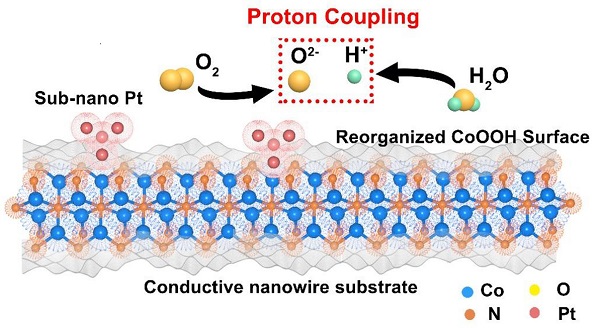Surface microenvironment optimization- induced robust oxygen reduction for neutral zinc-air batteries
Published in Natural Sciences, October 21, 2021
Si Liu#; Han Cheng#; Jun Xia#; Chun Wang; Renjie Gui; Tianpei Zhou; Hongfei Liu; Jing Peng; Nan Zhang; Wenjie Wang; Wangsheng Chu; HengAn Wu; Changzheng Wu*; Yi Xie*; Surface microenvironment optimization- induced robust oxygen reduction for neutral zinc-air batteries, Natural Sciences, 2021, 1(2): 210005. https://doi.org/10.1002/ntls.20210005

Abstract: Neutral zinc-air batteries (ZABs) are promising candidates for the next-generation power devices with considerably elongated lifetime comparing to conventional alkaline ZABs. However, neutral cathodic oxygen reduction reaction (ORR) is seriously limited by the mass transfer efficiency of hydroxyl due to insufficient interfacial chemical potential-gradient between catalytic layer and electrolyte. Herein, we highlight that electrochemical oxidation-induced surface microenvironment optimization could realize optimal chemical potential-gradient around catalytic sites and bring outstanding neutral ORR activity. The electrodeposited sub-nano Pt decorated surface-microenvironment-optimized Co2N samples (denoted as Pt-SMO-Co2N NWs) possessed 92 and 338 mV higher half-wave potential than commercial Pt/C and pristine Co2N in 0.2 M PBS. As for neutral ZABs, Pt-SMO-Co2N NWs cathode delivers a power density of 67.9 mW*cm–2 and displays negligible decay after nearly 80 h stability test at 20 mA*cm–2. In-depth characterization proposes that remarkable performance improvement originates from optimized microenvironment, which increases the surface chemical potential gradient and facilitates proton coupled electron transfer during ORR. We anticipated that such synergetic optimization of microenvironment and intrinsic activity of active sites is an effective strategy which may be extended to the catalytic reactions beyond ORR.
